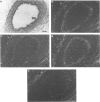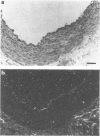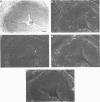Abstract
1. Receptor autoradiography with (-)-[125I]-cyanopindolol (CYP) was used to study the distribution of beta 1- and beta 2-adrenoceptor subtypes in the human internal mammary artery and saphenous vein. 2. Images from X-ray film and nuclear emulsion coated coverslips, exposed to [125I]-CYP labelled sections, showed a high density of beta 2-adrenoceptors localized to the endothelium of the internal mammary artery and fewer beta 2-adrenoceptors on the smooth muscle. 3. The function of beta-adrenoceptors in ring preparations of the internal mammary artery was investigated in organ bath studies. (-)-Isoprenaline produced concentration-dependent relaxation of phenylephrine contracted rings. The potency and maximal effects of (-)-isoprenaline were not influenced by the presence of the endothelium. 4. Images of [125I]-CYP binding to the saphenous vein, from X-ray film and nuclear emulsion coated coverslips, showed localization of beta 2-adrenoceptors to the outer smooth muscle and not to the endothelium. 5. Relaxation of mammary artery and saphenous vein to (-)-isoprenaline is mediated via beta 2-adrenoceptors located on the smooth muscle. Endothelial beta 2-adrenoceptors, although present on the internal mammary artery, mediate other functions.
Full text
PDF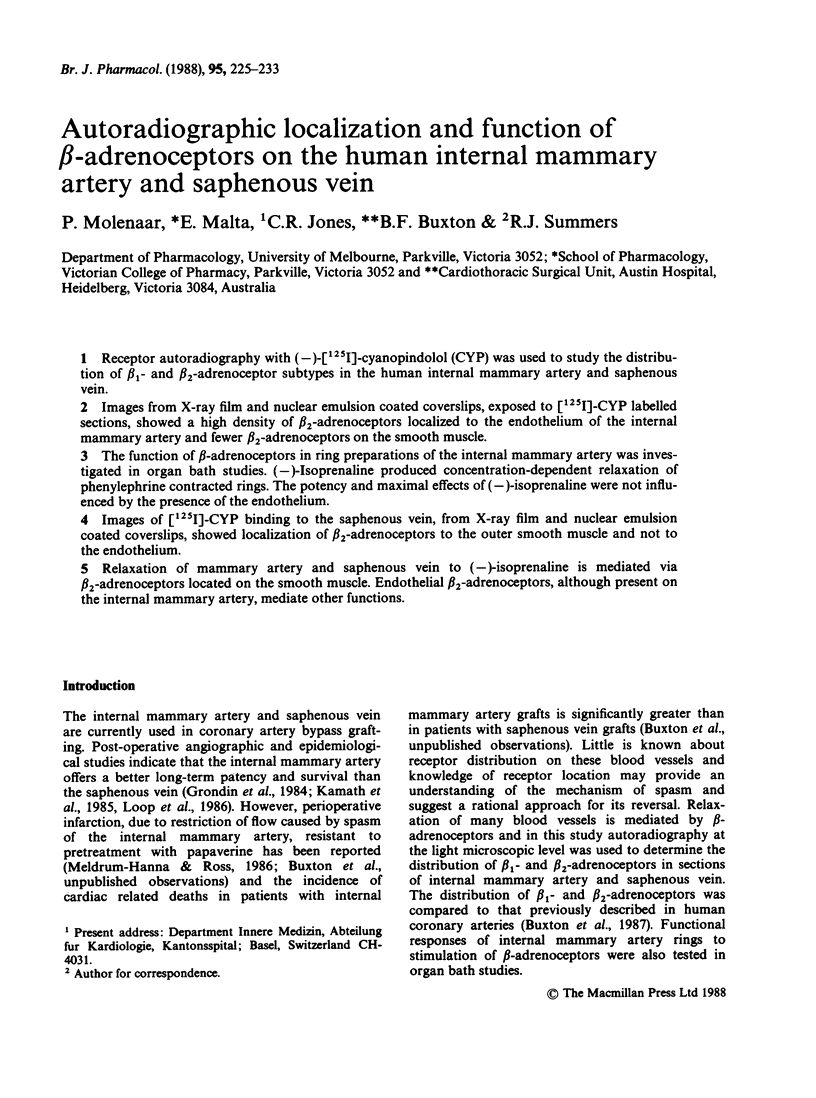
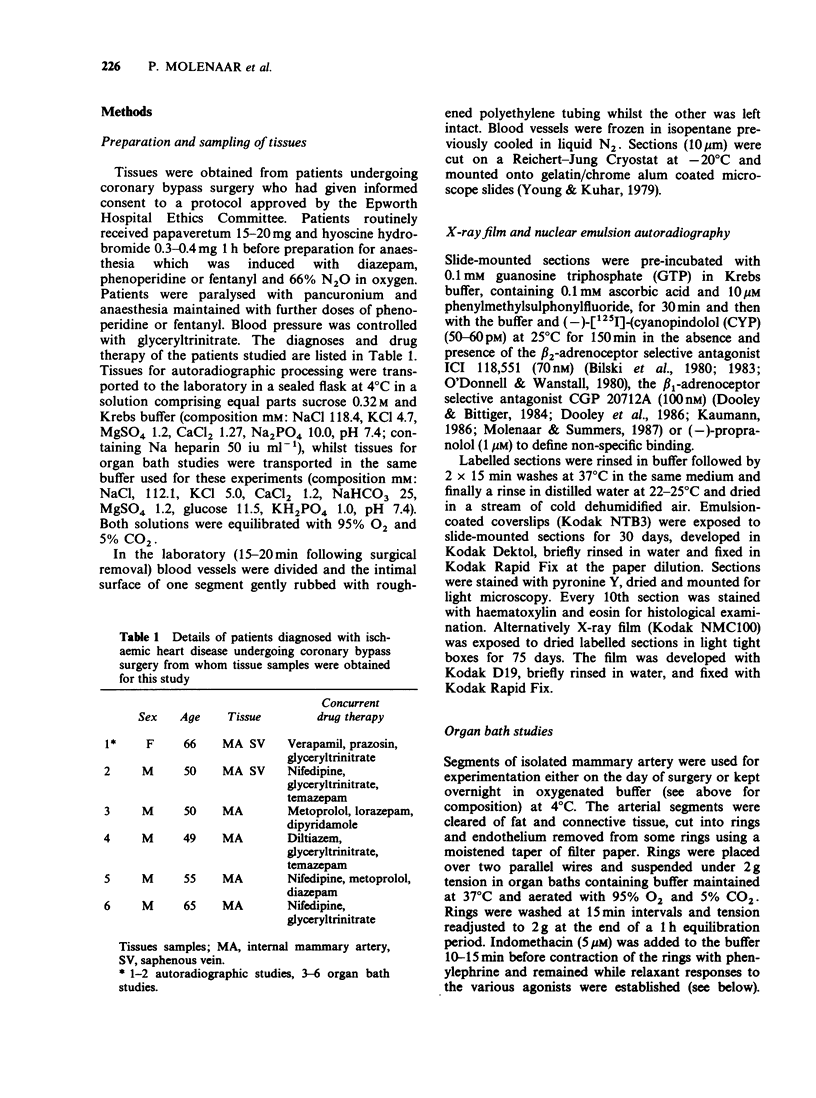
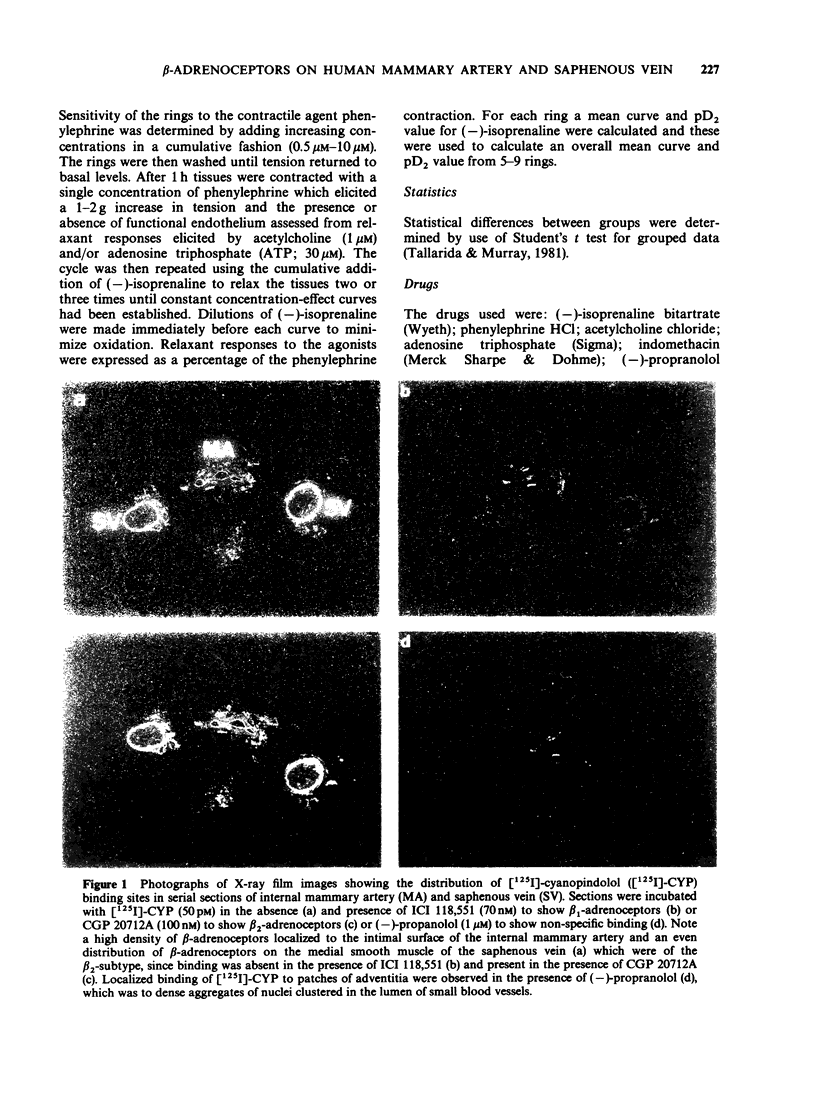
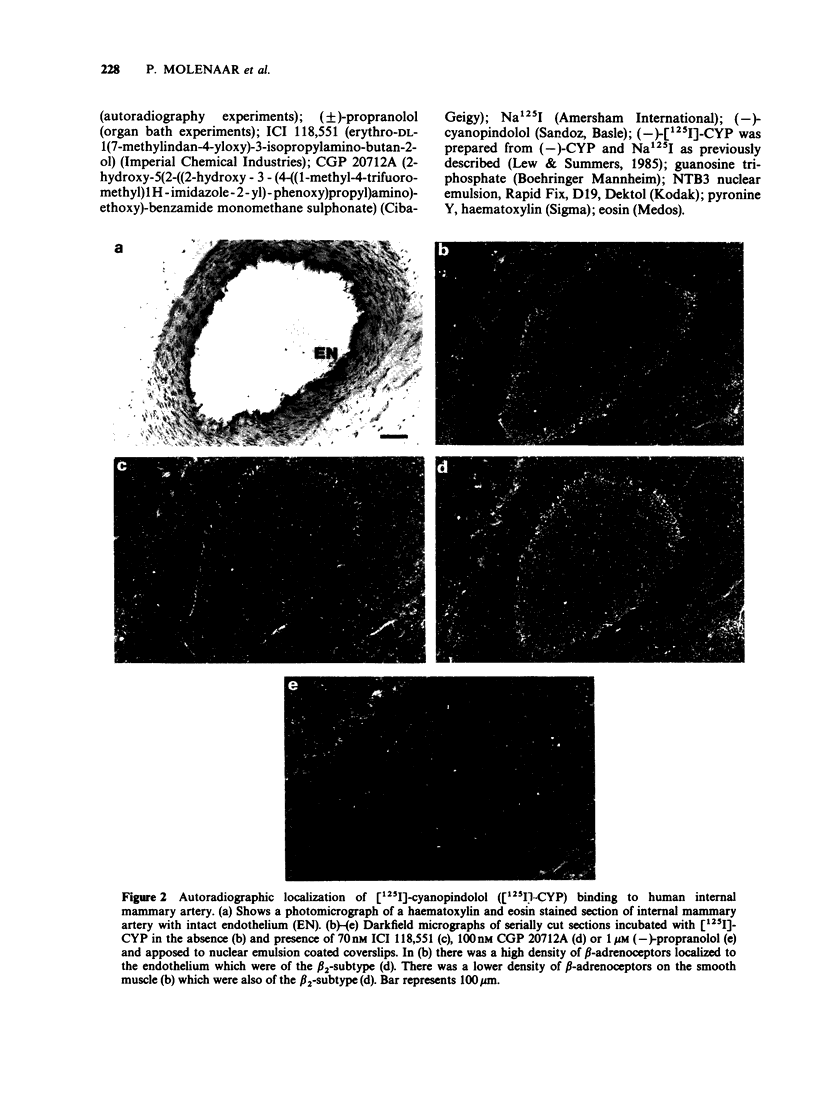
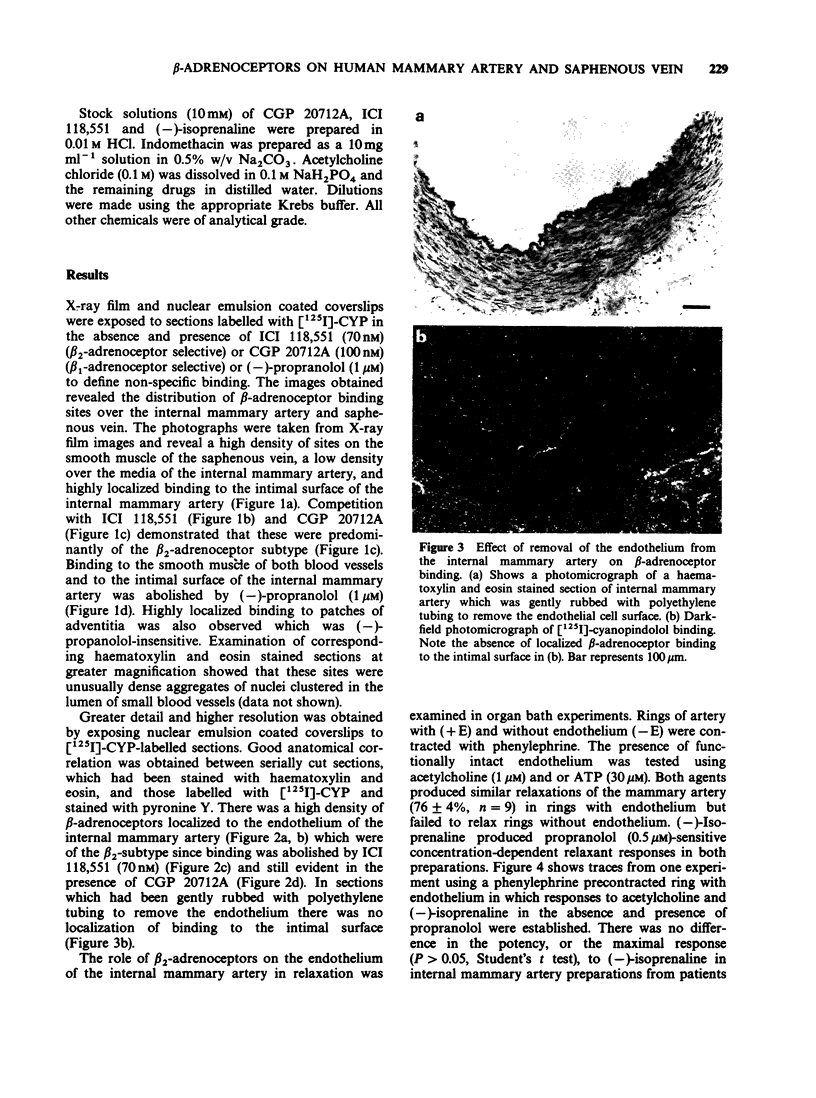
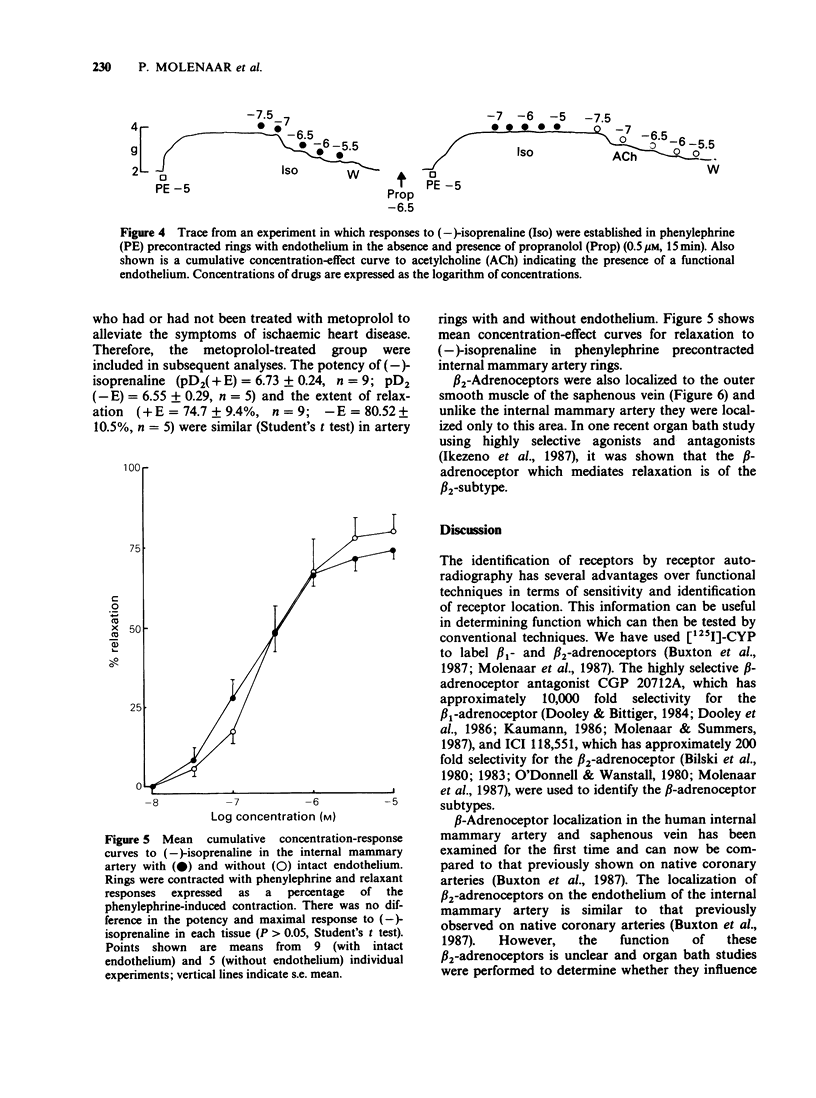
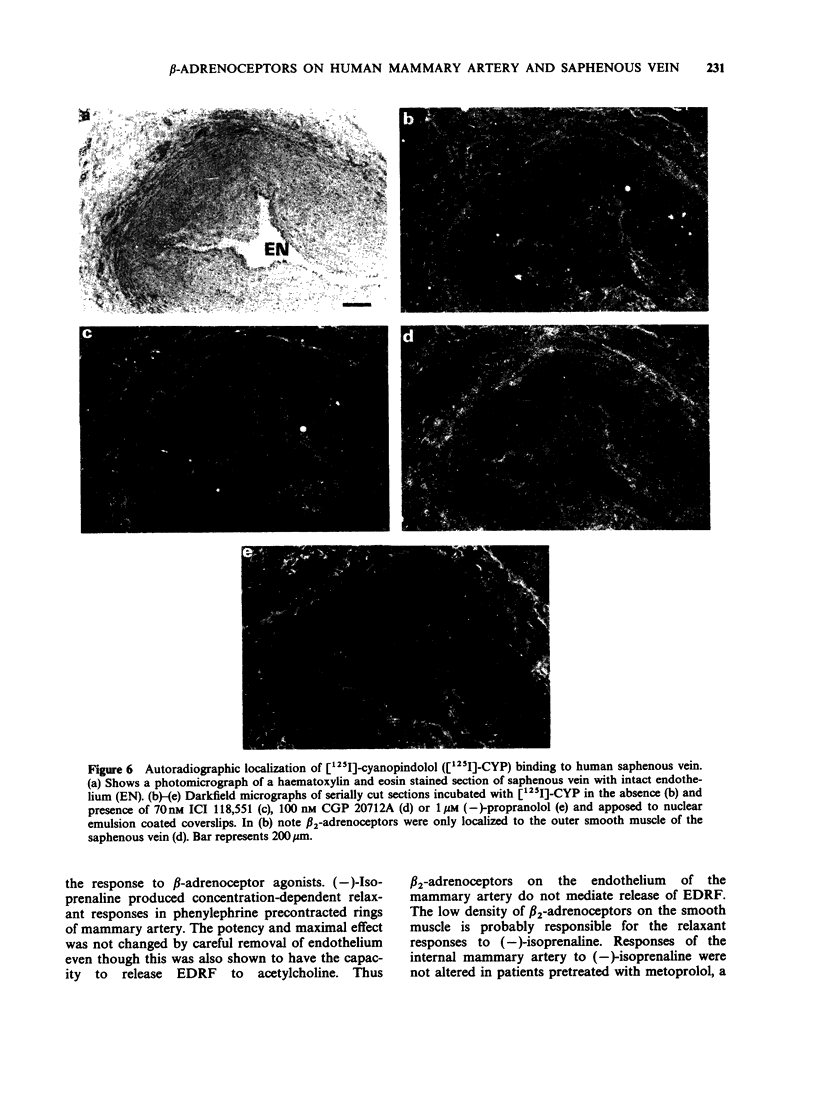
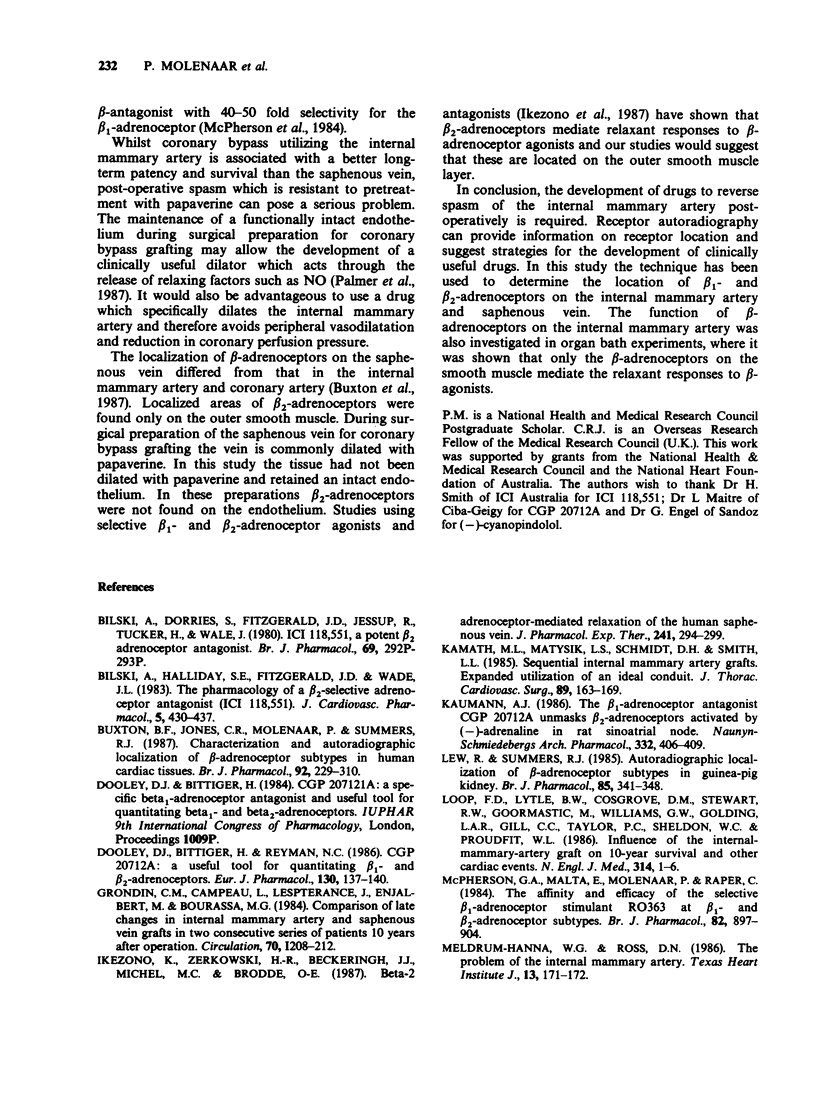
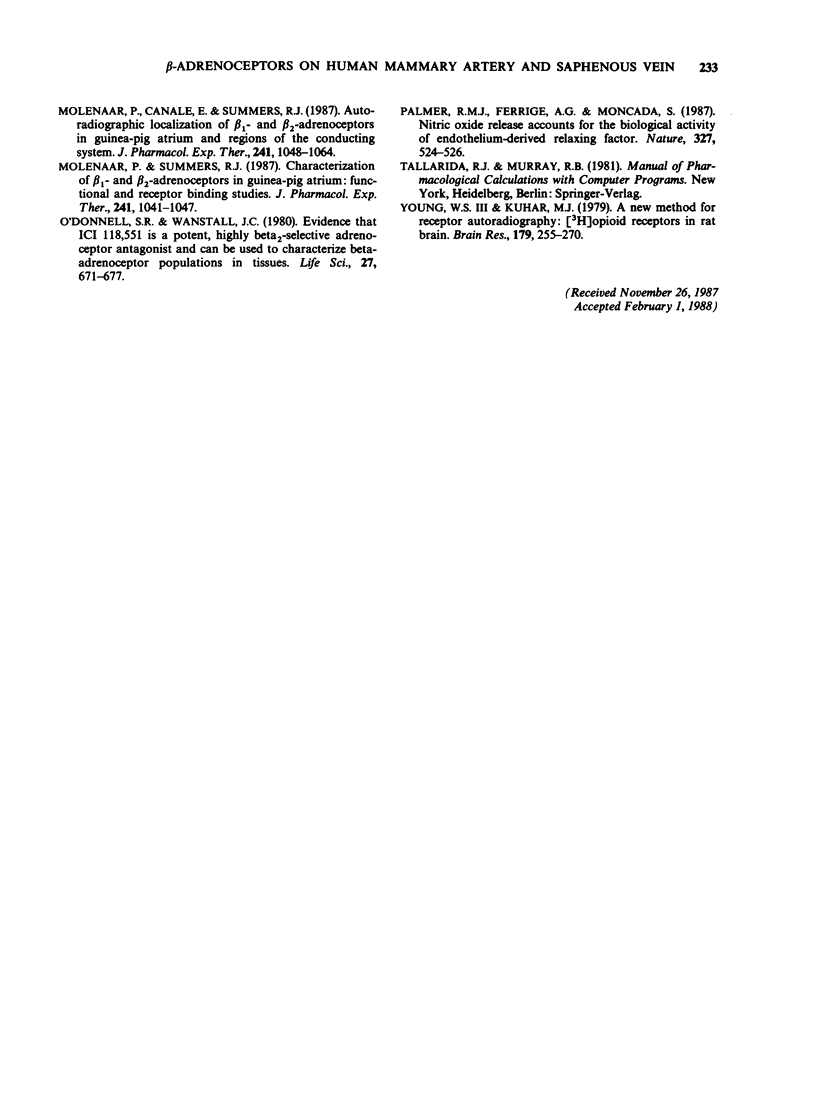
Images in this article
Selected References
These references are in PubMed. This may not be the complete list of references from this article.
- Bilski A. J., Halliday S. E., Fitzgerald J. D., Wale J. L. The pharmacology of a beta 2-selective adrenoceptor antagonist (ICI 118,551). J Cardiovasc Pharmacol. 1983 May-Jun;5(3):430–437. doi: 10.1097/00005344-198305000-00013. [DOI] [PubMed] [Google Scholar]
- Buxton B. F., Jones C. R., Molenaar P., Summers R. J. Characterization and autoradiographic localization of beta-adrenoceptor subtypes in human cardiac tissues. Br J Pharmacol. 1987 Oct;92(2):299–310. doi: 10.1111/j.1476-5381.1987.tb11324.x. [DOI] [PMC free article] [PubMed] [Google Scholar]
- Dooley D. J., Bittiger H., Reymann N. C. CGP 20712 A: a useful tool for quantitating beta 1- and beta 2-adrenoceptors. Eur J Pharmacol. 1986 Oct 14;130(1-2):137–139. doi: 10.1016/0014-2999(86)90193-7. [DOI] [PubMed] [Google Scholar]
- Grondin C. M., Campeau L., Lespérance J., Enjalbert M., Bourassa M. G. Comparison of late changes in internal mammary artery and saphenous vein grafts in two consecutive series of patients 10 years after operation. Circulation. 1984 Sep;70(3 Pt 2):I208–I212. [PubMed] [Google Scholar]
- Ikezono K., Zerkowski H. R., Beckeringh J. J., Michel M. C., Brodde O. E. Beta-2 adrenoceptor-mediated relaxation of the isolated human saphenous vein. J Pharmacol Exp Ther. 1987 Apr;241(1):294–299. [PubMed] [Google Scholar]
- Kamath M. L., Matysik L. S., Schmidt D. H., Smith L. L. Sequential internal mammary artery grafts. Expanded utilization of an ideal conduit. J Thorac Cardiovasc Surg. 1985 Feb;89(2):163–169. [PubMed] [Google Scholar]
- Kaumann A. J. The beta 1-adrenoceptor antagonist CGP 20712 A unmasks beta 2-adrenoceptors activated by (-)-adrenaline in rat sinoatrial node. Naunyn Schmiedebergs Arch Pharmacol. 1986 Apr;332(4):406–409. doi: 10.1007/BF00500096. [DOI] [PubMed] [Google Scholar]
- Lew R., Summers R. J. Autoradiographic localization of beta-adrenoceptor subtypes in guinea-pig kidney. Br J Pharmacol. 1985 Jun;85(2):341–348. doi: 10.1111/j.1476-5381.1985.tb08867.x. [DOI] [PMC free article] [PubMed] [Google Scholar]
- Loop F. D., Lytle B. W., Cosgrove D. M., Stewart R. W., Goormastic M., Williams G. W., Golding L. A., Gill C. C., Taylor P. C., Sheldon W. C. Influence of the internal-mammary-artery graft on 10-year survival and other cardiac events. N Engl J Med. 1986 Jan 2;314(1):1–6. doi: 10.1056/NEJM198601023140101. [DOI] [PubMed] [Google Scholar]
- McPherson G. A., Malta E., Molenaar P., Raper C. The affinity and efficacy of the selective beta 1-adrenoceptor stimulant RO363 at beta 1- and beta 2-adrenoceptor sites. Br J Pharmacol. 1984 Aug;82(4):897–904. doi: 10.1111/j.1476-5381.1984.tb16488.x. [DOI] [PMC free article] [PubMed] [Google Scholar]
- Meldrum-Hanna W. G., Ross D. N. Present status of the internal mammary artery bypass conduit at the Texas Heart Institute. Tex Heart Inst J. 1986 Mar;13(1):171–172. [PMC free article] [PubMed] [Google Scholar]
- Molenaar P., Canale E., Summers R. J. Autoradiographic localization of beta-1 and beta-2 adrenoceptors in guinea pig atrium and regions of the conducting system. J Pharmacol Exp Ther. 1987 Jun;241(3):1048–1064. [PubMed] [Google Scholar]
- Molenaar P., Summers R. J. Characterization of beta-1 and beta-2 adrenoceptors in guinea pig atrium: functional and receptor binding studies. J Pharmacol Exp Ther. 1987 Jun;241(3):1041–1047. [PubMed] [Google Scholar]
- O'Donnell S. R., Wanstall J. C. Evidence that ICI 118, 551 is a potent, highly Beta 2-selective adrenoceptor antagonist and can be used to characterize Beta-adrenoceptor populations in tissues. Life Sci. 1980 Aug 25;27(8):671–677. doi: 10.1016/0024-3205(80)90008-9. [DOI] [PubMed] [Google Scholar]
- Palmer R. M., Ferrige A. G., Moncada S. Nitric oxide release accounts for the biological activity of endothelium-derived relaxing factor. Nature. 1987 Jun 11;327(6122):524–526. doi: 10.1038/327524a0. [DOI] [PubMed] [Google Scholar]
- Young W. S., 3rd, Kuhar M. J. A new method for receptor autoradiography: [3H]opioid receptors in rat brain. Brain Res. 1979 Dec 28;179(2):255–270. doi: 10.1016/0006-8993(79)90442-6. [DOI] [PubMed] [Google Scholar]




